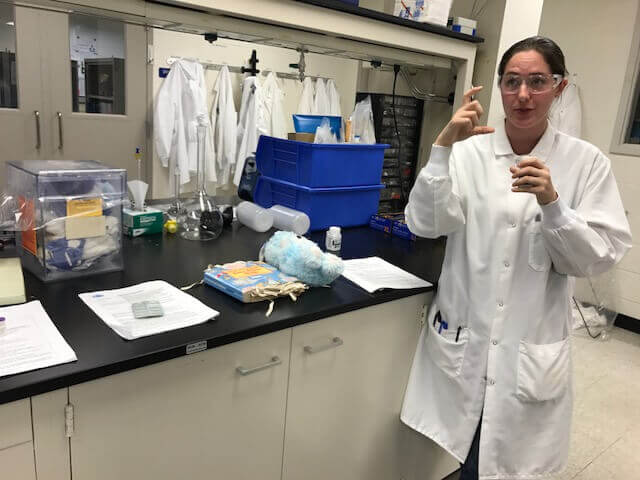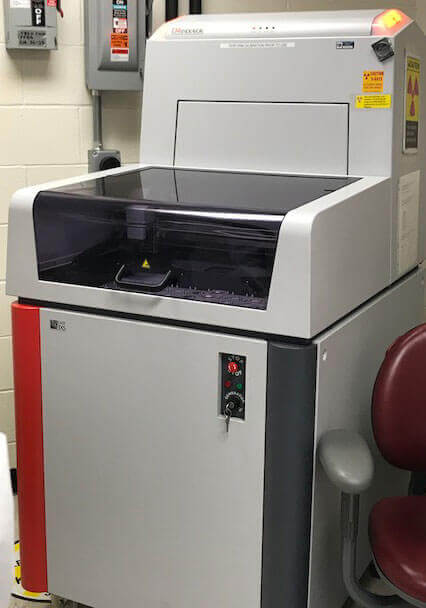4 High-Tech Tools That Help Investigators Detect Counterfeit Medicines

The issue of counterfeit medicines has been an enduring problem, especially in lower income countries, where an estimated 10 to 30 percent of medicines sold are believed to be counterfeit, according to the U.S. Centers for Disease Control and Prevention (CDC). In higher income nations with stricter regulations, including the United States and countries in the European Union, an estimated 1 percent of medicines sold are counterfeit, according to the CDC.
In addition to the economic impact, there’s an added risk when it comes to counterfeit medicines because they can cause harm— both by failing to deliver the proper active ingredients that the patient expects and by possibly containing ingredients that may be harmful.
Making sure those counterfeit medicines don’t get into the hands of unsuspecting patients is the mission of a team of scientists and investigators— and they have some state-of-the-art technology at their disposal to complement their shoe-leather detective work.
First, the Low-Tech Way to Detect Counterfeits
Even before investigators employ high-tech tools, the most obvious counterfeits are apparent from their packaging to the eagle-eyed inspector, according to Jeff DeBartolo, a scientist with Pfizer Global Supply.
“A lot of it is very basic — does it have spelling errors, is it the right color, is it the right format? Are there just gross errors with it?” DeBartolo says of the packaging.
The Videometer
Once the basic visible assessment is done, one of the tools the inspectors turn to is a videometer, which checks the color spectrum of the packaging to detect anomalies. Located at Pfizer’s Groton, Conn., R&D site, the videometer checks the color spectrum in both infrared and ultraviolet and, according to DeBartolo, it’s affectionately nicknamed the “disco ball” because of the light show it creates.

Pfizer scientist Jeff DeBartolo demonstrates how the infrared spectrometer can compare counterfeit samples from the Groton lab database to authentic.
“We already know right from the get-go that this is counterfeit,” he says, referring to one particular package that used colors that became obsolete in 2002 for genuine products. “We're not just looking at the visible light region, we're looking at the invisible region. A counterfeiter is going to try to make something look as similar to the naked eye as possible. They're not really looking at some of the other areas [of the spectrum] as well.”
[PULL_QUOTE]
And products from the same counterfeiter tend to have similar spectrums, so that gives investigators a starting point to see which counterfeits may be coming from the same source, says Brian Donnelly, Pfizer’s Director of Global Security for the Americas Region.
“So, now we have a starting point from an intelligence standpoint to know the likelihood that there’s a supplier in Florida and there's a supplier in Ohio and they're buying from the same person,” Donnelly says. “And then we may be able to use that later with the other intelligence we get.”
The Raman Spectrometer
After investigators have studied the packaging, they can begin to analyze the product itself, says Victoria Masterson, a scientist with Pfizer Global Supply.
They start with a tool called the handheld Raman spectrometer, which is easy to use, even for agents in the field. “It has a very clear yes/no—a big red X means this is bad and a green checkmark means this is correct. It's portable, so you can bring it to crime scenes or manufacturing sites. It's very quick, which is really important,” Masterson says.

A Raman spectrometer uses a laser to detect the unique spectral signature of a compound being tested.
“We created a database full of our own, authentic Pfizer manufactured products,” Masterson says, referring to the main active ingredients and the inactive ingredients. “The greatest thing about this instrument is that it’s non-destructive, so I'm not even preparing any of the sample of the product to be tested in a lab. I just have to make sure that the sample is in the viewing window of the spectrometer.”
Raman spectroscopy works by introducing a laser to a sample. The sample's molecules vibrate and rotate from the laser's energy, which creates the unique spectrum.
The Raman spectrometer would be enough for authorities to seize the product and make an arrest, Donnelly says. But if the field agent discovers a counterfeit product, they will send it to a lab for further testing.

Victoria Masterson, a scientist with Pfizer Global Supply, explains the various methods used to detect counterfeit medicines.
“These results will be used in potential future court trials,” Masterson says. “So, we want multiple confirmatory tests from a number of different instruments that all say it's counterfeit.”
Infrared Spectroscopy and Powder X-Ray Diffraction
Two other tools that investigators use are infrared spectroscopy and powder X-ray diffraction. Both can be used to further analyze samples and deformulate the counterfeit tablets in a more discriminatory fashion than the Raman spectrometer.

This device that performs powder X-ray diffraction is used to de-formulate the counterfeit tablets. It’s used along with infrared spectroscopy to identify the inactive components of the tablets and to confirm the presence or absence of the active pharmaceutical ingredient.
“Counterfeiters can throw a bunch of weird stuff in there, like we see a lot of crushed drywall material,” Masterson says, and those compounds show up as peaks and valleys on the spectrum that don’t match up with the authentic compound.
The Dead Giveaway of Counterfeits—Lack of Quality Control
While some counterfeiters may create products that more closely resemble the genuine deal, even the closer counterfeits tend to fail on consistency between batches, Donnelly says.
“What did we learn so far about the counterfeiters? They have no quality control,” he says. “So, even if we get the correlation on the formulation, the next time they make it, doesn't mean it would be the same. So, at best, it's only good for a batch.”
And while the high-tech tools are an invaluable tool for the investigators, good old-fashioned detective work is crucial, Donnelly says. “Things like the videometer are a place to start looking for things that may be related and then we build upon that.”





